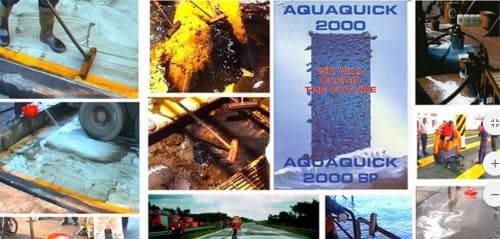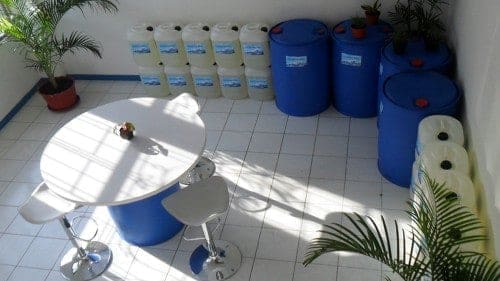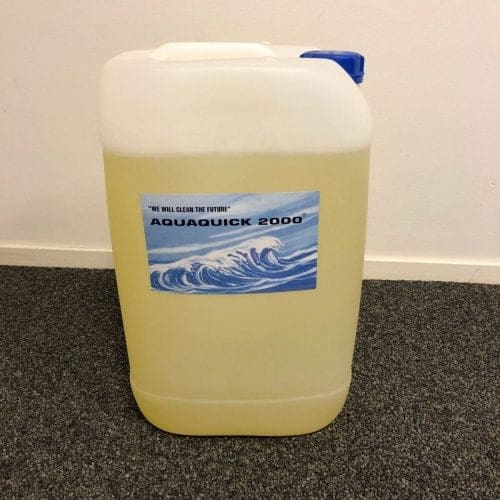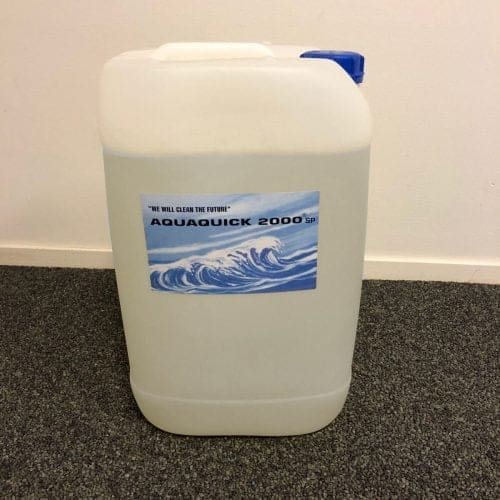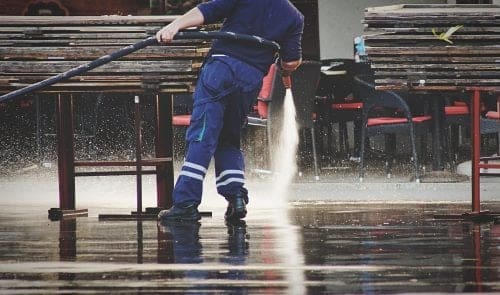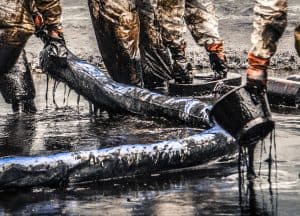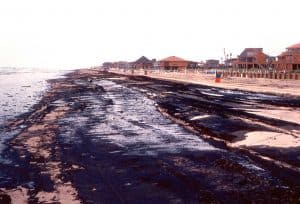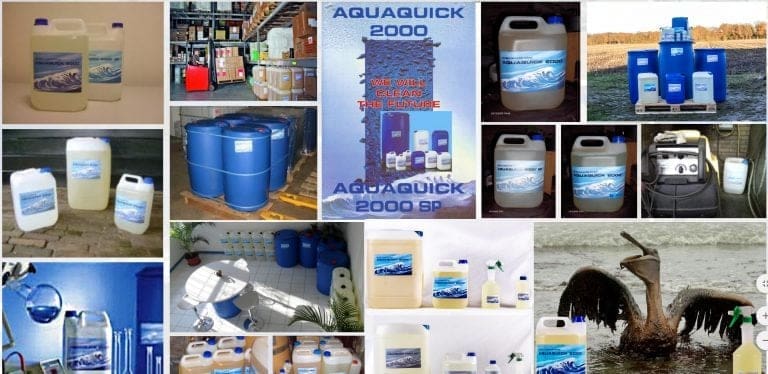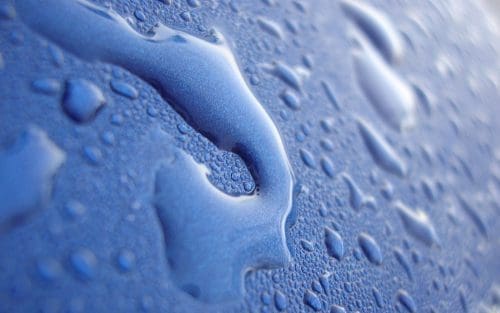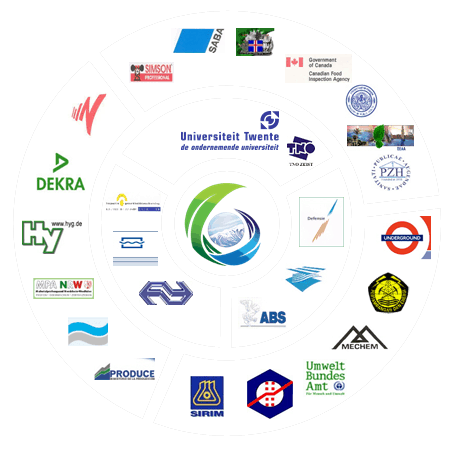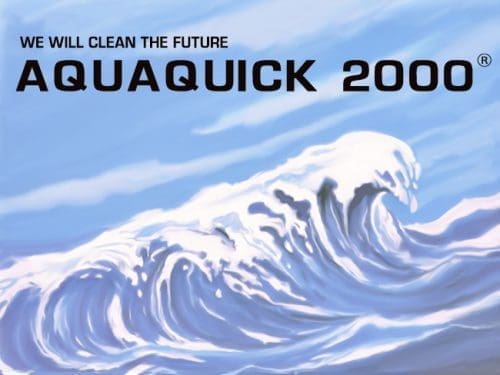Oil spills present significant environmental challenges which requires effective oil spill solutions. Effective oil spill solutions are crucial for mitigating these consequences and restoring affected areas to their natural state.
One common approach to oil spill cleanup is mechanical recovery, which involves the use of booms and skimmers to contain and remove spilled oil from the water’s surface. Booms act as barriers to contain the oil, while skimmers collect the oil for removal. While this method can be effective in certain situations, it is limited by factors such as weather conditions, water currents, and the type of oil spilled.
Chemical dispersants are another widely used oil spill solution. These dispersants are applied to the spilled oil to break it down into smaller droplets, which can then be more easily degraded by naturally occurring microorganisms. While chemical dispersants can help accelerate the natural biodegradation process, they also pose potential risks to marine life and ecosystems and must be used with caution.
Bioremediation is an increasingly popular oil spill solution that harnesses the power of naturally occurring microorganisms to degrade spilled oil. Microorganisms such as bacteria and fungi are introduced to the spill site, where they feed on the oil and break it down into harmless byproducts. Bioremediation is a cost-effective and environmentally friendly solution that can be tailored to specific spill conditions and types of oil.
In situ burning is another oil spill solution that involves igniting the spilled oil to burn it off the water’s surface. While this method can be highly effective in removing large quantities of oil quickly, it also releases air pollutants and greenhouse gases into the atmosphere and must be carefully managed to minimize environmental impacts.
Ultimately, the most effective oil spill solutions often involve a combination of these methods, tailored to the specific conditions and characteristics of each spill. By employing a comprehensive and integrated approach to oil spill response, we can minimize the environmental impact of spills and protect the health and well-being of ecosystems and communities worldwide.
Understanding the Long-Term Impacts of Oil Spills
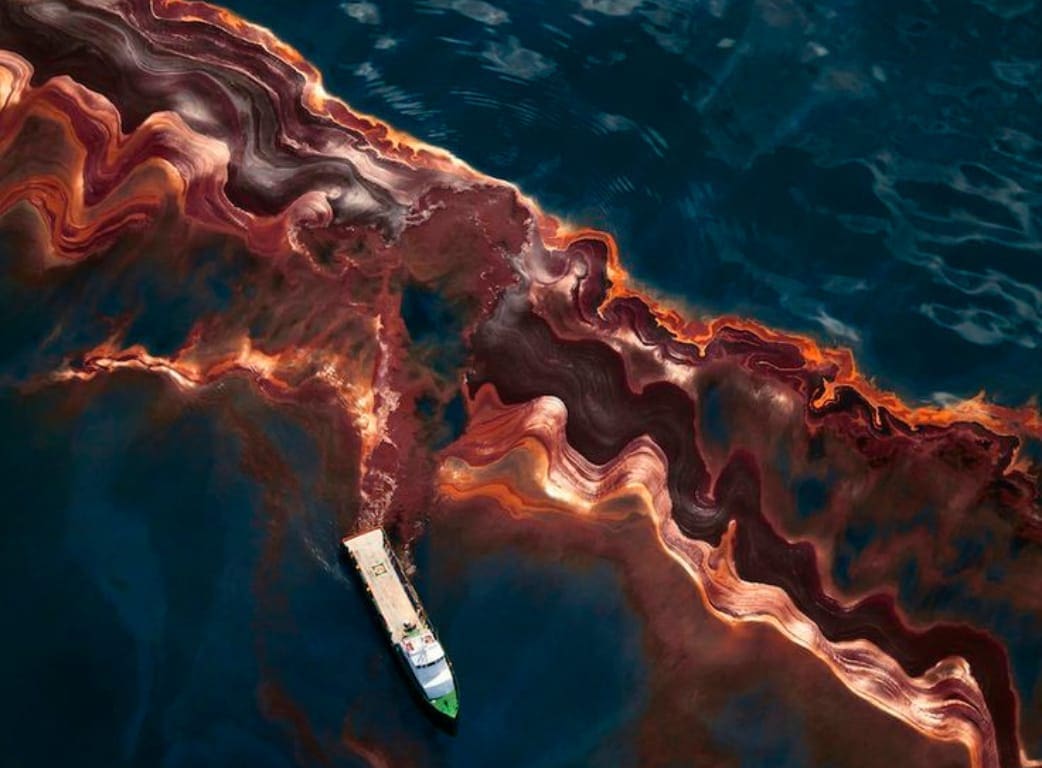
Oil spills are catastrophic events that have far-reaching and long-lasting consequences for the environment, wildlife, economies, and human health. These events occur when oil is released into the environment, typically in marine or coastal areas, due to accidents involving oil tankers, drilling rigs, pipelines, or other sources of oil extraction, transportation, or storage. The long-term impacts of oil spills are profound and multifaceted, highlighting the urgent need for effective oil spill solutions to mitigate and prevent these devastating events.
1. Environmental Degradation
Perhaps the most immediate and visible impact of oil spills is the environmental degradation they cause. Oil coats and suffocates plants, animals, and marine life, disrupting ecosystems and destroying habitats. The toxic components of oil can persist in the environment for years, contaminating soil, water, and air. This contamination can lead to long-term damage to biodiversity, ecosystem function, and natural resources, jeopardizing the health and resilience of affected ecosystems.
2. Wildlife Harm and Mortality
Oil spills pose a significant threat to wildlife, causing harm and mortality to a wide range of species, including birds, marine mammals, fish, and invertebrates. Oil coats the feathers or fur of animals, impairing their ability to regulate body temperature and repel water, leading to hypothermia, drowning, and suffocation. Additionally, ingesting or inhaling oil can cause internal injuries, organ damage, and poisoning, further exacerbating the impact on wildlife populations.
3. Economic Losses
The economic repercussions of oil spills are extensive and long-lasting. Coastal communities reliant on fishing, tourism, and recreational activities suffer immediate losses due to declines in fish stocks, beach closures, and reduced visitation. Additionally, industries such as agriculture and aquaculture may experience declines in productivity and profitability due to environmental contamination. Long-term economic impacts include decreased property values, loss of livelihoods, and increased healthcare costs associated with cleanup and remediation efforts.
4. Human Health Risks
Oil spills pose significant risks to human health, both directly and indirectly. Direct exposure to oil and its toxic components can cause a range of health problems, including respiratory issues, skin irritation, and neurological disorders. Indirectly, contaminated air, water, and food sources can lead to long-term health consequences, such as cancer, reproductive problems, and cardiovascular diseases. Cleanup workers and residents of affected areas are particularly vulnerable to these health risks.
5. Damage to Infrastructure
In addition to environmental and human health impacts, oil spills can cause significant damage to infrastructure, including ports, harbors, pipelines, and coastal facilities. Oil-contaminated structures may require extensive cleaning, repairs, or replacement, leading to disruptions in transportation, commerce, and energy supply chains. The cost of repairing or replacing damaged infrastructure can be substantial, further exacerbating the economic burden of oil spills on affected communities and industries.
The Urgent Need for Oil Spill Solutions
Given the devastating long-term impacts of oil spills, there is an urgent need for effective oil spill solutions to prevent, mitigate, and remediate these environmental disasters. Oil spill solutions encompass a range of strategies and technologies aimed at minimizing the impact of spills on the environment, wildlife, economies, and human health. These solutions may include preventive measures, such as stricter regulations, improved safety protocols, and advanced monitoring systems, as well as response measures, such as containment, recovery, and cleanup operations.
1. Preventive Measures
Preventive measures are essential for reducing the risk of oil spills and minimizing their impact on the environment and communities. These measures may include regulatory frameworks that impose stricter safety standards and oversight on oil extraction, transportation, and storage activities. Additionally, investments in research and development of safer technologies and alternative energy sources can help reduce reliance on fossil fuels and mitigate the need for risky oil exploration and production activities.
2. Early Detection and Response
Early detection and rapid response are critical for containing and mitigating the impact of oil spills once they occur. Advanced monitoring systems, satellite imagery, and real-time data analysis can help detect oil spills early and facilitate prompt response efforts. Additionally, the deployment of specialized equipment, such as oil booms, skimmers, and dispersants, can help contain and recover spilled oil before it spreads and causes further damage to the environment and wildlife.
3. Environmental Remediation
Environmental remediation involves restoring ecosystems and habitats affected by oil spills to their pre-spill conditions. This may involve a combination of physical, chemical, and biological techniques, such as shoreline cleanup, sediment dredging, and microbial bioremediation. Environmental restoration efforts aim to minimize the long-term ecological impacts of oil spills and promote the recovery and resilience of affected ecosystems and wildlife populations.
4. Technological Innovations
Technological innovations play a crucial role in advancing oil spill solutions and improving their effectiveness and efficiency. Emerging technologies, such as unmanned aerial vehicles (UAVs), autonomous underwater vehicles (AUVs), and remote sensing technologies, offer new opportunities for monitoring, detection, and response to oil spills in remote or inaccessible areas. Additionally, developments in oil spill cleanup technologies, such as nanomaterials, absorbents, and biodegradable dispersants, hold promise for enhancing the speed and effectiveness of cleanup operations while minimizing environmental impact.
The long-term impacts of oil spills on the environment, wildlife, economies, and human health underscore the critical need for effective oil spill solutions. By implementing preventive measures, early detection and response strategies, environmental remediation efforts, and technological innovations, we can minimize the occurrence of oil spills and mitigate their devastating consequences. As stewards of the planet, it is our collective responsibility to invest in and prioritize the development and implementation of oil spill solutions to protect the environment, safeguard biodiversity, and promote sustainable development for future generations.
Benefits of Using AQUAQUICK 2000 As An Oil Spill Solution
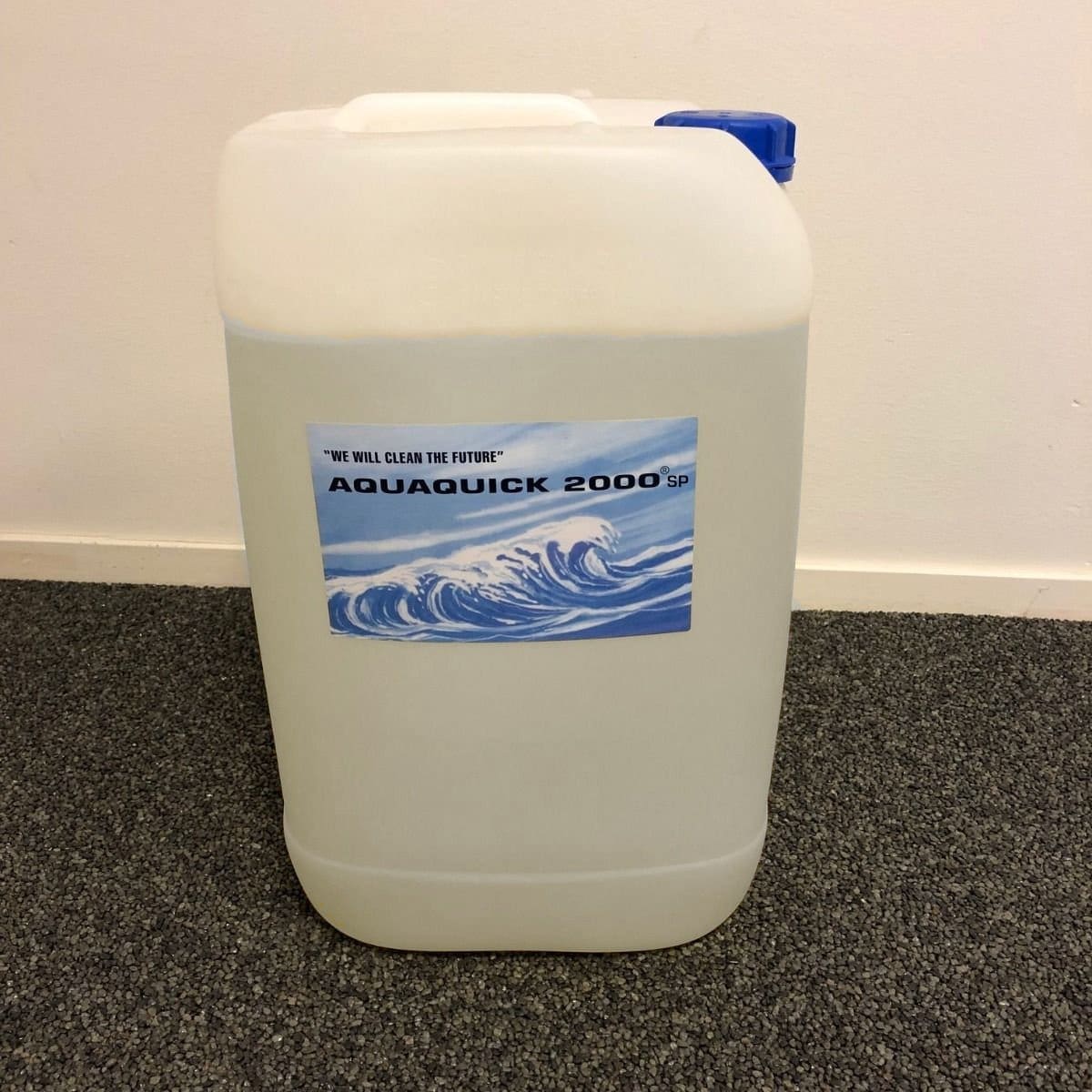
In today’s era of environmental consciousness and industrial responsibility, finding effective and eco-friendly oil spill solution is paramount. Among the myriad products vying for attention, AQUAQUICK 2000 shines as a beacon of innovation and sustainability. With its revolutionary approach to oil spill remediation and hydrocarbon cleaning, AQUAQUICK 2000 offers unparalleled benefits and advantages that set it apart from traditional alternatives. Let’s explore the multifaceted advantages of choosing AQUAQUICK 2000 as your go-to solution for oil spill cleanup and environmental stewardship.
Non-Toxic and Environmentally Safe
One of the defining features of AQUAQUICK 2000 is its commitment to environmental safety and non-toxicity. Unlike many conventional cleaners laden with chlorides, solvents, and alkaloids, AQUAQUICK 2000 boasts a natural and environmentally friendly composition. Tested and approved by reputable research institutes such as TNO Netherlands and the International Maritime Organization (IMO), AQUAQUICK 2000 offers a non-toxic approach to oil spill solution, ensuring minimal harm to aquatic organisms and delicate ecosystems. The absence of harmful chemicals not only protects marine life but also prevents long-term damage to aquatic habitats, ensuring sustainable environmental stewardship for generations to come.
Efficient Oil Breakdown
At the heart of AQUAQUICK 2000’s effectiveness lies its ability to rapidly break down hydrocarbon structures with unparalleled efficiency. Through bio-molecular processes, AQUAQUICK 2000 transforms hydrocarbons into micro-emulsions, facilitating their easy removal from affected surfaces. This unique formulation not only accelerates the cleanup process but also enhances bacterial growth, further aiding in the natural degradation of oil spills. Whether deployed in its diluted state or applied directly to contaminated areas, AQUAQUICK 2000 demonstrates remarkable efficacy in restoring oil-covered environments to their pristine state. With a diluted ratio of 1:50, AQUAQUICK 2000 offers a potent yet environmentally friendly solution for tackling oil spill solution for a variety of surfaces, including animals and vegetation in aquatic environments.
Cost-Effective and Energy-Efficient
In addition to its environmental benefits, AQUAQUICK 2000 delivers significant cost savings and energy efficiency for industries tasked with oil spill solution. By reducing chemical waste and increasing productivity, AQUAQUICK 2000 minimizes downtime and decreases expenses associated with traditional cleaning procedures. Moreover, its energy-saving properties contribute to sustainable practices, aligning with modern environmental standards.
The economic benefits of using AQUAQUICK 2000 extend beyond direct cost savings, encompassing indirect benefits such as enhanced operational efficiency and reduced environmental liabilities. Whether employed for large-scale oil spill remediation or routine maintenance tasks, AQUAQUICK 2000 proves to be a sound investment for businesses seeking cost-effective and environmentally responsible cleaning solutions.
Safe for Human and Material Contact
Another noteworthy feature of AQUAQUICK 2000 is its safety for human and material contact. Unlike harsh chemical cleaners that pose health risks to workers and cause damage to equipment and infrastructure, AQUAQUICK 2000 boasts a non-corrosive and non-irritant composition. Its gentle formulation ensures no harm to metals, paint, coatings, rubber, or plastics, making it suitable for a wide range of applications across various industries. Whether used as a daily hand soap or applied to industrial surfaces, AQUAQUICK 2000 prioritizes safety without compromising cleaning efficacy. By promoting a safe working environment and preserving the integrity of materials, AQUAQUICK 2000 enhances operational efficiency and minimizes the risk of accidents or injuries associated with traditional cleaning products.
Multi-Purpose Application
From oil tank cleaning to rig maintenance, AQUAQUICK 2000 offers unparalleled versatility in its applications. Its bioemulsifier, degreaser, and oil dispersant properties make it indispensable for industries such as oil and gas, shipping, aviation, manufacturing, and food processing. Additionally, its suitability as a fire extinguisher further enhances its utility in emergency situations, providing an all-encompassing solution for oil spill cleanup and remediation. Whether deployed in marine environments or industrial facilities, AQUAQUICK 2000 demonstrates unmatched efficacy and versatility, earning its reputation as a go-to solution for diverse cleaning challenges.
Rapid Biodegradability
One of the hallmark features of AQUAQUICK 2000 is its rapid biodegradability, which ensures minimal environmental impact and promotes ecosystem health. Unlike traditional cleaning products that leave behind harmful residues and contaminants, AQUAQUICK 2000 breaks down into harmless by-products, ensuring environmental sustainability without compromising cleaning performance. With surface water degradation occurring within 21 days and purification plant breakdown in less than 60 minutes, AQUAQUICK 2000 demonstrates its commitment to eco-friendly oil spill solutions. By promoting natural degradation processes, AQUAQUICK 2000 helps restore ecosystems to their natural balance, preserving biodiversity and ecosystem services for future generations.
Unmatched Technical Support
Backed by decades of expertise, AQUAQUICK 2000 offers unparalleled technical support to users worldwide. Whether for guidance on application techniques or detailed product information, its dedicated technical team ensures seamless integration and optimal performance. With a commitment to customer satisfaction and continuous improvement, AQUAQUICK 2000 sets the standard for technical excellence and innovation in the cleaning industry. Whether addressing complex cleaning challenges or providing routine maintenance support, its technical experts are always ready to assist users in achieving their cleaning objectives efficiently and effective.
AQUAQUICK 2000 stands as a testament to innovation and sustainability in the realm of oil spill solution and environmental stewardship. With its non-toxic composition, efficient oil breakdown capabilities, and versatile applications, AQUAQUICK 2000 offers a comprehensive oil spill solution for industries seeking cost-effective and environmentally responsible cleaning solutions. Embrace AQUAQUICK 2000 for a cleaner, greener future, where environmental preservation and industrial efficiency go hand in hand. By choosing AQUAQUICK 2000, users can confidently address oil spill solution challenges while safeguarding the environment and promoting sustainable development on a global scale.

